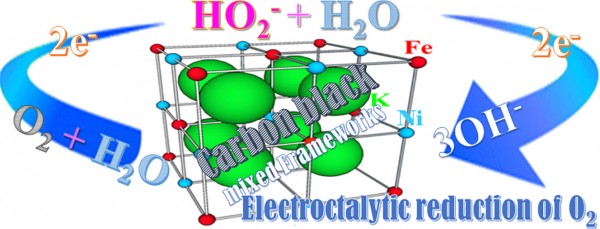Oxygen reduction reaction on nickel-based Prussian blue analog frameworks synthesized via electrochemical anodization route
- 저자
- Hoa Thi Bui, Nabeen K. Shrestha, Keumnam Cho, Chinna Bathula, Henry Opoku, Yong-Young Noh*, Sung-Hwan Han*
- 저널명
- Journal of Electroanalytical Chemistry, 828, 80-85 (2018)
- 년도
- 2018
- Link
- https://doi.org/10.1016/j.jelechem.2018.09.033 471회 연결
[Abstract]
The present work reports on the morphological influence of catalyst on oxygen reduction reaction (ORR). As a catalyst, Prussian blue analog structured nickel hexacyanoferrate (Ni-HCF) with two distinct morphologically controlled frameworks, viz. granular crystalline bulk film and rose-petal like structured thin film having smooth surface, are synthesized via controlled anodization route, and their morphological influence on the ORR is investigated. In addition, the influence of addition of carbon black, which is commonly used as catalytic dispersing support, is also studied on the catalytic mechanism for the ORR. Based on the hydrodynamic voltammetry of the electrocatalytic films on rotating disk electrode, the number of electrons involved in the reduction of an O2 molecule, and the kinetic current density of the reaction are estimated. While the pristine Ni-HCF frameworks based catalyst, regardless of their morphology, demonstrates the direct reduction of O2 with participation of 4 electrons, the frameworks when mixed with carbon black as support diverts the reduction via two steps with participation of 2 electrons at each step. A larger kinetic current density is, however, obtained in the case of granular crystalline bulk film of the Ni-HCF frameworks.
